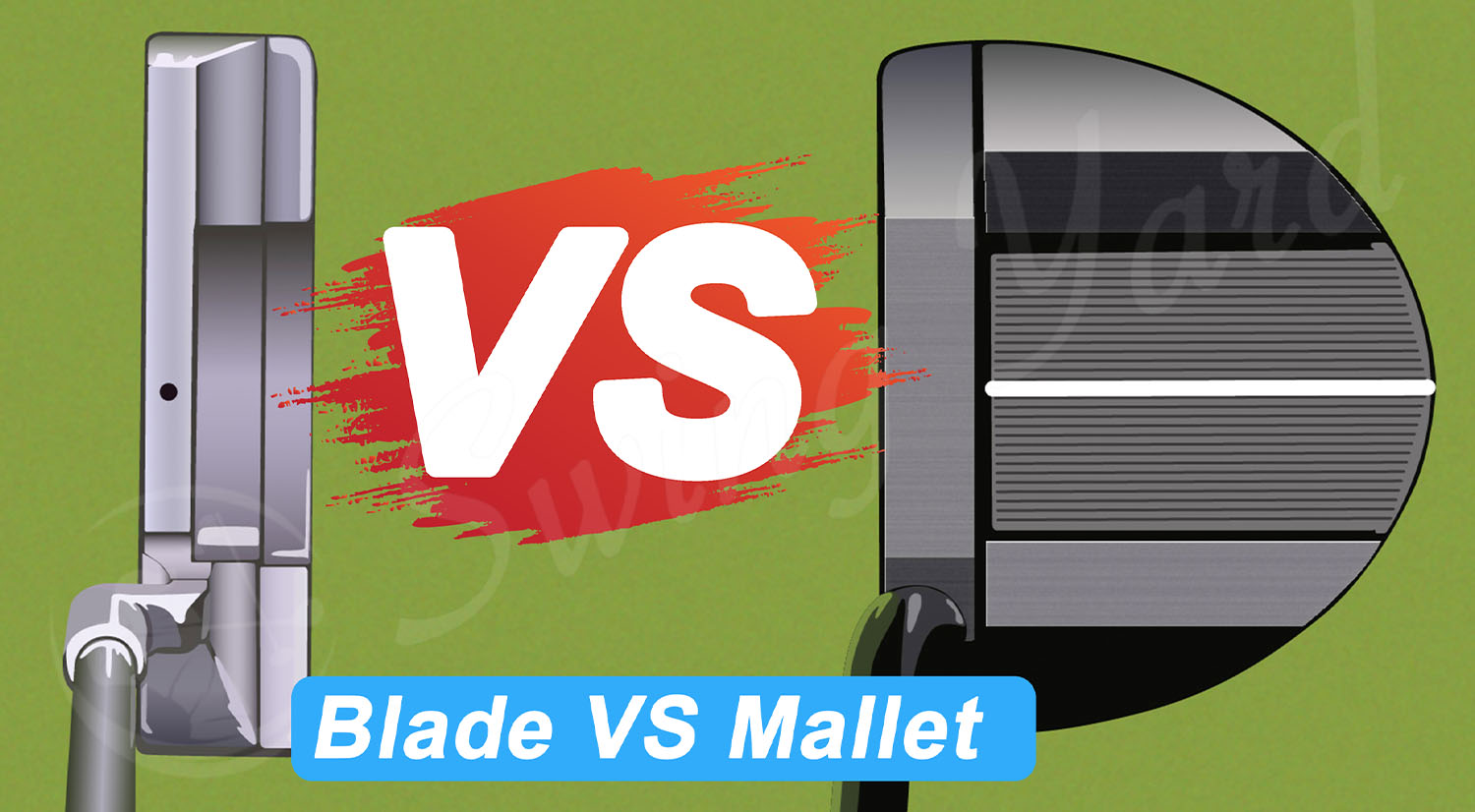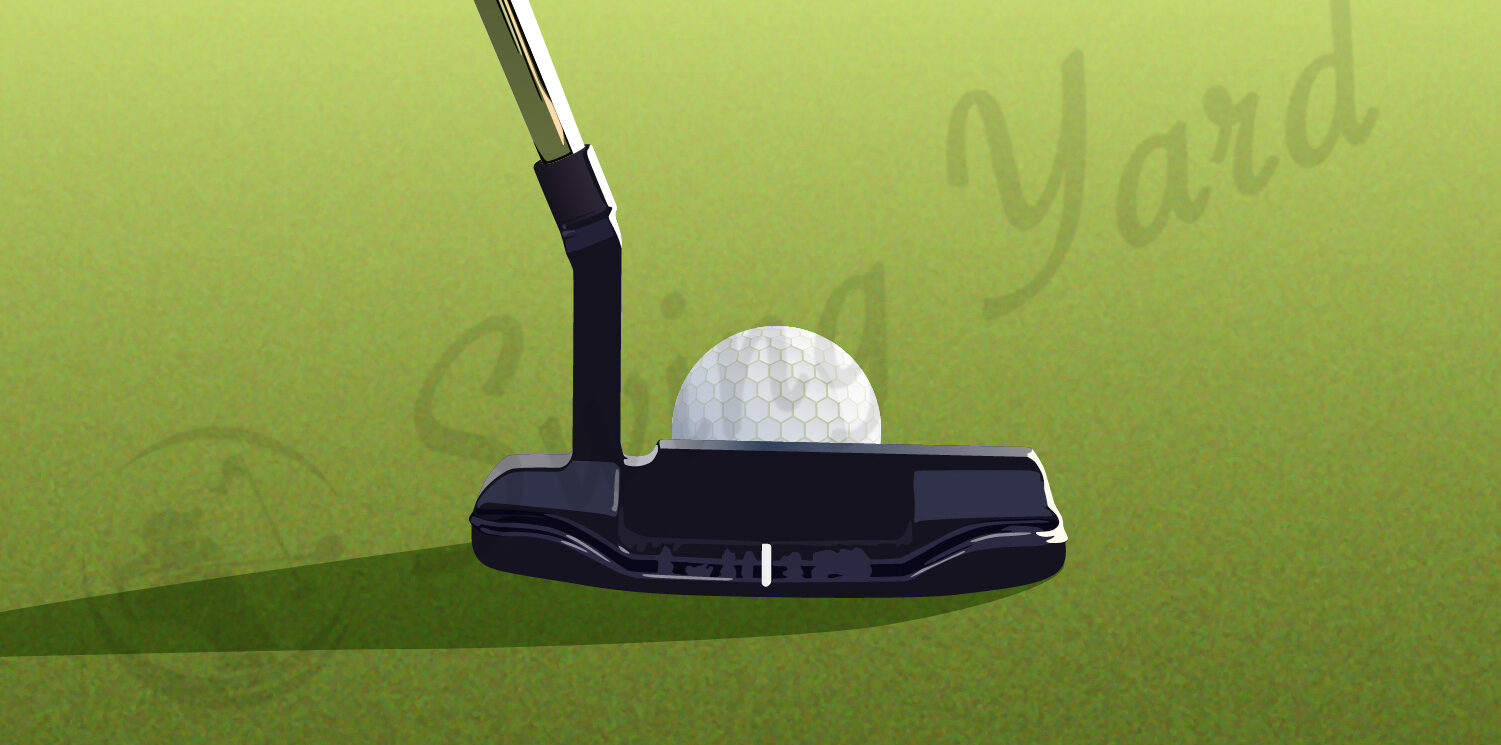Mallet vs Blade Putter: Find Out What the Pros are Switching To

By Coach Erik Schjolberg – Feb 5, 2024
Contents
Key Takeaways – Who Wins the Blade vs Mallet Putter Battle?
- Mallet putters tend to offer more forgiveness, but there are also high MOI blade putters on the market for golfers to choose from
- A blade putter can be a great choice for fast greens because of the design and the control it gives players
- Pay close attention to the type of putting stroke you have before selecting a putter
- Many putters are customizable, allowing for extra forgiveness or customized weighting; this is an important feature when choosing a blade vs mallet, the most important clubs in the bag
When choosing a golf putter, the first and most important part of the process is to pick between a blade or mallet putter. I have played both blade style putters and mallet style putters in my career as a golfer, and I can honestly tell you that they both have positives and negatives.
Don’t let anyone tell you the blade is better or a mallet putter is better. Technology has come too far.
Regardless of the type of putter you are looking for (or what the pros are switching to), there are great options out there. The key is understanding the differences and how they impact your golf game.
What’s the Difference Between Mallet and Blade Putters?
When the mallet style putter first came out, the differences between blades and mallets were there but not necessarily as noticeable as they are today. Today, the blade style putter and the modern mallet are entirely different.


Breaking down these differences and determining which of these matters to you can help you decide which is the best for your game.
Putter Design and Look
My Winner – Blade
The putter design is the most obvious difference between a blade and a mallet. Mallet putters are big, have more material behind the clubhead than a blade putter, and are often a bit clunky looking.
Blade putters have a more classic design and a smaller overall profile. The length of a blade putter is often shorter than it is with a mallet putter. The overall look is something that has to match your personal preference.
I like the look of a clean blade, but some mallet putters have come out in the last few years that, despite being rather large, still have a clean and appealing look to them.
Feel
My Winner – Tie
Feel will vary from one putter to the next, even within the blade and mallet category. However, most golfers will feel as though the mallet putter is heavier and requires a different type of swing than a blade style putter.
Most of the time, a blade putter will have more of an artistic or finesse style feel. Mallet putters tend to be more of a hit or a strike.
I have always found that when comparing mallet vs.blade putters, the blade putters had the best feel on faster greens and mallet putters on slower greens. However, if a putter has an insert or is a milled design, the overall feel will vary tremendously. On top of that, by not knowing how to grip a putter the right way, you’ll inadvertently change the feel.
The bottom line here is that you can find great feeling mallet and blade putters.
Distance Control
My Winner – Mallet
Distance control is how far you hit the ball and your ability to control that. Golfers great at distance control will know precisely what it takes to hit a 15 foot putt. Players that struggle may miss a 15 foot putt by three or four feet.
Mallet putters have always been a bit better at distance control than blades. Mallets allow you a slightly larger sweet spot and make it easier to roll the golf ball toward the target with some idea as to how much effort it will take.
Forgiveness
My Winner – Mallet
If your goal is to find a forgiving putter, you will find that mallet putters offer a bit more forgiveness. Blade style putters are better for feel and control, whereas the mallet putter head helps with more forgiveness.
The two areas of putting where golfers need forgiveness are direction and speed.
A premium mallet putter often has longer alignment lines that lead to an easier alignment of the club head. In addition, the sweet spot is often larger making it easier for players to control speed or distance.
However, many golf purists find that forgiveness in putting still doesn’t really help the ball go into the hole. In fact, forgiveness just makes the misses better. The last time I checked, golf was a game of misses!
Alignment
My Winner – Mallet
Alignment of the putter face to the target is essential to choosing a great golf putter. The best mallet putters take advantage of all the space on the top of the putter head and make it easy for golfers to line up their putts.
With the blade putters, there is a lot less room to work with, and it ends up making it challenging to have the same alignment benefits.
I’m currently using a Scotty Cameron blade putter, and I do not have trouble lining my putter up to the hole. When I switch to a mallet with a long alignment line, I can see the appeal, but I don’t think it’s necessarily the best for golfers with an arc-style stroke.
If you struggle with alignment, check out my article on how to practice putting at home. With the right putter style, you’ll improve in no time!
Player Handicap Level
My Winner – Tie
The general rule of thumb is that lower handicap players do better with a blade style putter. However, more and more blade putters are being made with a higher MOI. Putter manufacturers realize that golfers are interested in great feel, but they also want golf putters that make it easier to sink a putt.
If you are a higher handicapper or a beginner, a putter fitting is probably not necessary. Your putting stroke will change many times before you settle on something.
After studying the guide I wrote on golf putting tips, take a few putts with a friend’s blade vs mallet putter and see which one performs better. Most newer players will find that the mallet putter is the better fit.
Putting Stroke Style
My Winner – Tie
This is where the differences between the mallet vs blade putter become more important. To choose a proper putter, you must understand what type of stroke you have. There are two choices, an arc type putting stroke and a straight back straight, through putting stroke.
With the arc, the putter face will rotate, and the putter head travels on a slight arc back and then through the ball. There is a bit more manipulation of the face of the putter with an arc style as the putter moves through the shot.
The straight back and straight through style putting stroke keeps the putter head lined up at the target and on that target line for the duration of the stroke. The putter does not waiver.
In the great blade v mallet putter debate, the mallet is the clear better choice for the straight back straight through. The blade style is better for the arc putting stroke.
Green Speeds
My Winner – Mallet
Many players are surprised that making great putts and adjusting to green speeds is more about the weight of the putter than anything else.
When greens are fast, you will want a heavier putter – which makes the mallet a slightly better choice.
Many mallet putters are naturally heavier than the blade, and they often have customizable weighting for golfers to work with. As a golfer searching for a new putter, try to consider the green speeds that you are playing from and how this will play into the putter you choose.
Check out my guide on how to read golf greens for speed and break if you can’t quite get a read.
PGA Players Who Prefer a Mallet Putter vs Blade Putter
Many golfers have the wrong impression that a mallet type putter is for an amateur golfer because it’s more forgiving. However, mallet putters can work for professionals as well. If you remember, when Dustin Johnson was playing on the PGA Tour, he had a large TaylorMade Spider mallet that helped him win quite a few tournaments.
Some golfers on the PGA Tour believe that the mallet putter pros outweigh the cons:
- Scottie Scheffler
- Jon Rahm
- Rory McIlroy
- Cameron Young
- Xander Schauffele
- Billy Horschel
- Patrick Cantlay
- Justin Thomas
More than half of the golfers on the PGA Tour and those in the top 50 Official World Golf Rankings are using a mallet style putter. Of course, as new putters come out in 2023, we may see some changes.
However, we have learned that mallet putters have a lot to offer, even at the professional level.
PGA Players Who Prefer a Blade Putter vs Mallet Putter
A blade putter has the classic design that so many PGA players have used for years. Since the original Ping Anser hit the market, pros have preferred a blade putter vs mallet putter for their feel, consistency, and impressive overall performance. However, with mallet putters starting to dominate the number of putters that come out on the market, it’s not surprising that many golfers have been moving toward the mallet.
- Collin Morikawa
- Tony Finau
- Tom Kin
- Jordan Spieth
- Matt Fitzpatrick
FAQ
The blade vs mallet putter decision is a big one. It’s smart to ask some questions and clarify that this is a good choice for your needs.
Is a blade or mallet putter better?
The blade and mallet putter can both offer great features for golfers; the key is to know what type of putting stroke you have. Blades tend to be more of a toe hang putter vs face balanced and will help golfers with an arc stroke square up the putter face.
Do pros use a mallet or blade putter?
In recent years there has been an overwhelming shift from blade to mallet style putters for professionals. Great golfers are finding that mallet style putters have quite a bit to offer when it comes to both forgiveness and consistency. Some may even alternate a mallet or blade putter depending on green speed.
Are blade putters less forgiving?
Blade putters have a smaller sweet spot and, because of that, can be less forgiving than mallet style putters. However, in recent years putter manufacturers like Odyssey have helped to create high MOI blade putters that appeal to golfers who like blades but still want forgiveness.
What is a mallet putter good for?
The mallet putter is good for distance control and forgiveness. The distance control from mallet putters allows golfers to get the ball close to the hole and eliminate some of the three putts. Mallet putters are an excellent choice for high handicappers and beginners, but many pros also love them.
What are the advantages of a blade putter?
Blade putters have great feel and finesse. I have always felt that I was the one in control when using a blade putter. It makes it easier to make difficult breaking putts when you have a putter you can trust and be a bit more artistic with.
Final Thoughts – Choosing a Mallet vs Blade Putter is Personal
The blade vs mallet putter discussion will likely never end. It’s like the old Tiger vs. Phil debate that will continue forever. I think the most important takeaway you should have in the blade vs mallet putter discussion is that blade putters are great for arc style strokes, and mallet putters are great for straight back and straight through style putting strokes.
Each of these putters has plenty to offer golfers; the key is to find the one that is the best fit for your golf putting stroke. If you are unsure as to what type of stroke you have, take a video down the line, and you should be able to see the way the putter is traveling.
Want to try out a lot of different putters for free? Set up an office putting green at work and swap with your colleagues!

